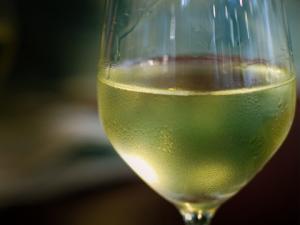Wine: Recent California standouts and a little history lesson
I hope young lovers and longtime pals enjoyed a fantastic Valentine’s Day. As I have previously mentioned, Feb. 14 is also Barbara’s birthday. This is fortuitous so far; one less date to remember. I just need to remember it twice as much. I’m writing the column on Monday evening, so I am unable to describe the outcome yet. I can say the wine shoppes, florists, confectioners I visit and restaurants are geared up and already doing a thriving business.
Keep your eyes peeled for Oak Farm Vineyards Zin and Sauvignon Blanc 2017, and Barbera 2016. All three were roundly applauded at several well-known competitions. The SB, Mohr-Fry Ranches, did especially well, winning six golds and five double golds at several prestigious events with scores of 90-92 points. As regulars know, few critics will go much higher on an under-$20 SB. The SB from Lodi was cold fermented. Iit was fresh with bright acidity. Look for citrus (lime) and peach nose.
The palate repeats the nose with lovely fruit/acidity balance and a pleasing flint mineral aftertaste in the long, clean, dry finish; 92 plus 2 price points McD under $22. The Zinfandel 2017 is rated 90 by most of the critics. I think 2016 is a notch or two better and 92 points. Be careful here, as the price on the ‘17 has spiked to $25 and rising, likely due to very favorable reviews. I think it’s a buy up to $26. The price line on this goes from $240/case in New York to $359 in Berkeley, Calif. Very dark purple due to addition of Petite Sirah, which also amped up the tannin. Eight months of barrel aging in 28 percent new oak adds barrel notes to aromas and flavors, also hints of eucalyptus (frequently and wrongly described as mint). This needs cellar time. Nose was difficult to sort out for me.
When was the last time you tried a Barbera? This is the third most-planted wine grape in Italy. Many Italians settled in California wine country. Migliavacca, Perrone and Pagani were some original Italian wine folks. Prior to Prohibition, Zinfandel was the most widely planted varietal grape in California. Then came Phylloxera, Prohibition and the Depression. The wine industry collapsed. It took until 1975 to reacquire total plantings in Napa. Available in 1875 were 24,644 acres. By comparison, here are recent numbers. Cabernet Sauvignon - 22,868 acres (50 percent); Chardonnay - 6,445 acres (14 percent); Merlot - 4,583 acres (10 percent); Sauvignon Blanc - 2,789 acres (6 percent); Pinot Noir - 2,789 acres (6 percent); and Zinfandel - 1,317 acres (3 percent).
Early 20th century was heavily influenced by Italians. Initially they established olive and fruit orchards and grew wheat. They planted Primitivo, Sangiovese and even tried Glera. However, many of the old vines were still there languishing. Later on, large tranches of these old Zin vines were uprooted. Fortunately, there are still enough to provide “Old Vine Zinfandel.” Gallo, Sebastiani, Martinelli, Rochioli, Franzia, Martini and Mondavi are a few who helped remake the Napa/Sonoma wine region. Visitors to many parts of Italy will be struck by how similar the crops and terrain of the Piedmont are to Central California.
Anyhow, here is a great site for those who have time. It is a bit lengthy but when you finish you will be able to discuss California wine with the most erudite oenologist: www.thewinecellarinsider.com/california-wine/california-wine-history-fro....
Bit of a sidetrack there. Oak Farm Barbera is a fine way to acquaint or reacquaint with this varietal wine.
Oak Farm Lodi Barbera 2016 priced under $22 is a solid 91 points McD. The 2015 was a tad better but it appears to be sold out. The nice thing about these red beauties is they don’t need cellar time. Think lamb! Dark garnet-colored, black cherry, pencil shavings and pie spice nose. Cherries repeat on round palate, finishes with a proper tannin/acid balance.
The Oak Farm Tievoli Red Blend is also excellent. Did you know that Primitivo is another name for Zinfandel? Here’s another factoid: Sutter Home White Zinfandel was a total mistake. In 1975, Bob Trinchero, owner of Sutter Home, had a “stuck fermentation” problem.
The yeast died before all fermentation was ended. He pushed it aside, but financial concerns prevailed and he bottled it to sell off. ”Muricans” loved it for 20 years.























































